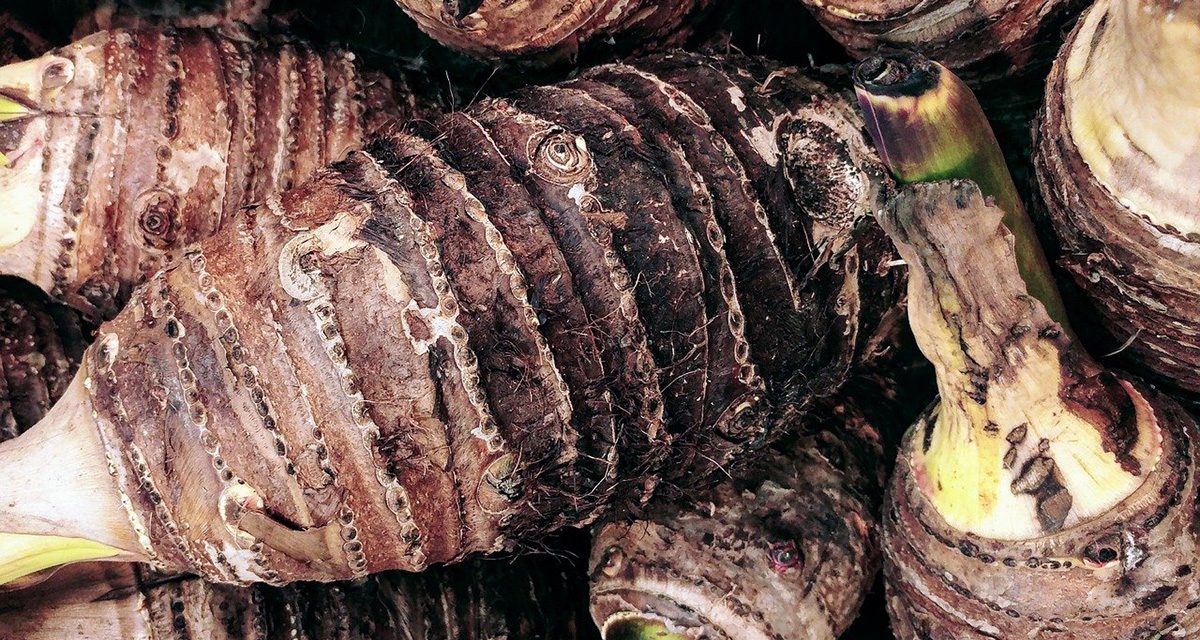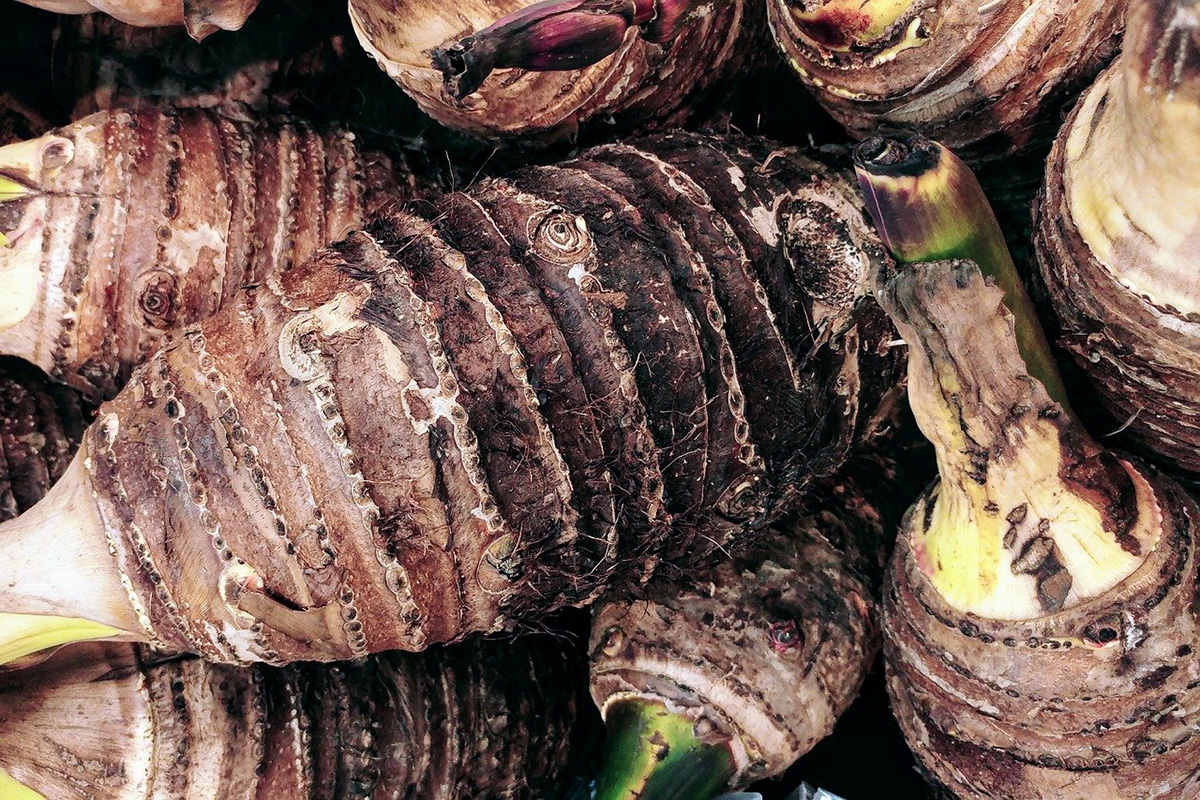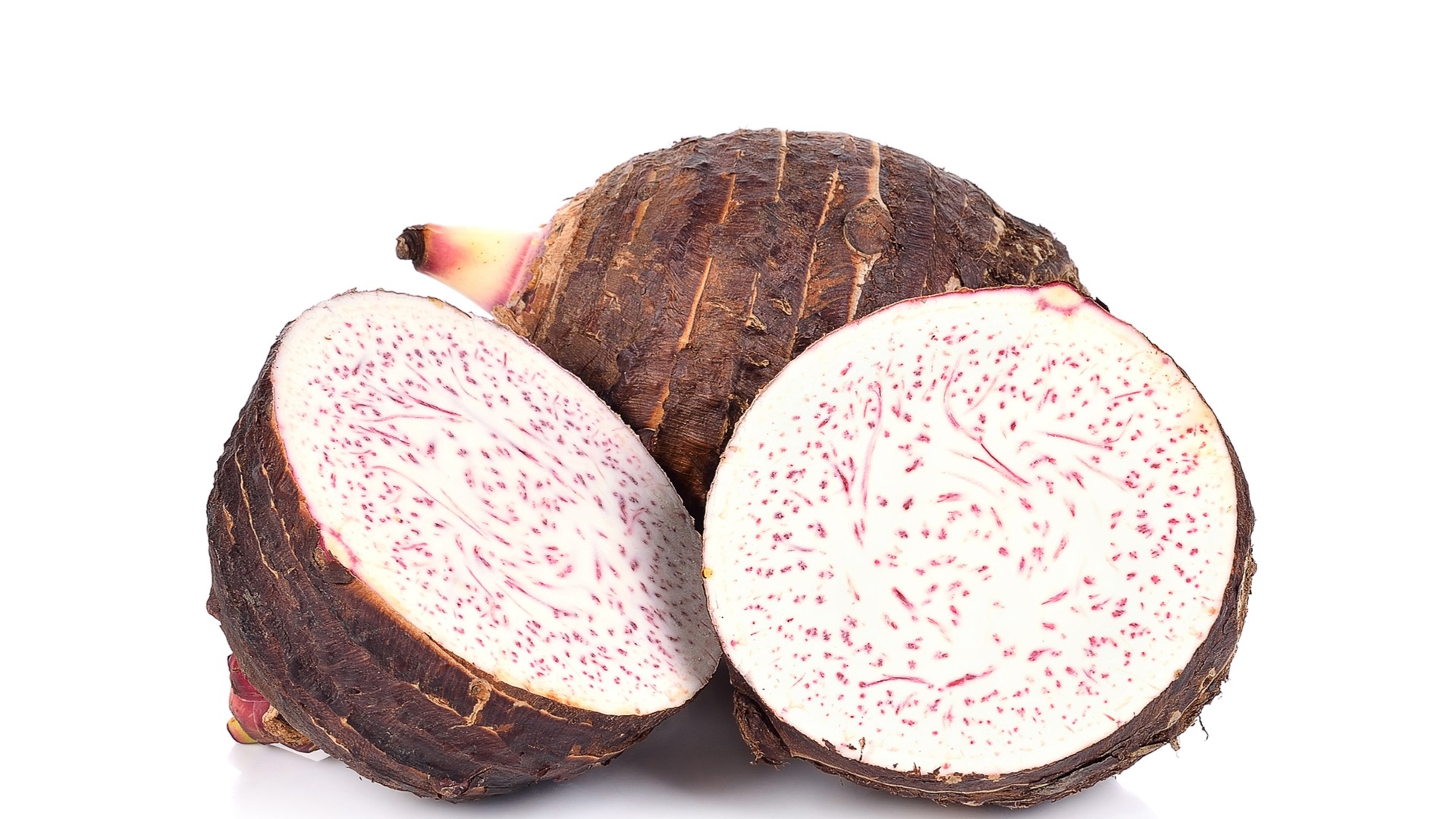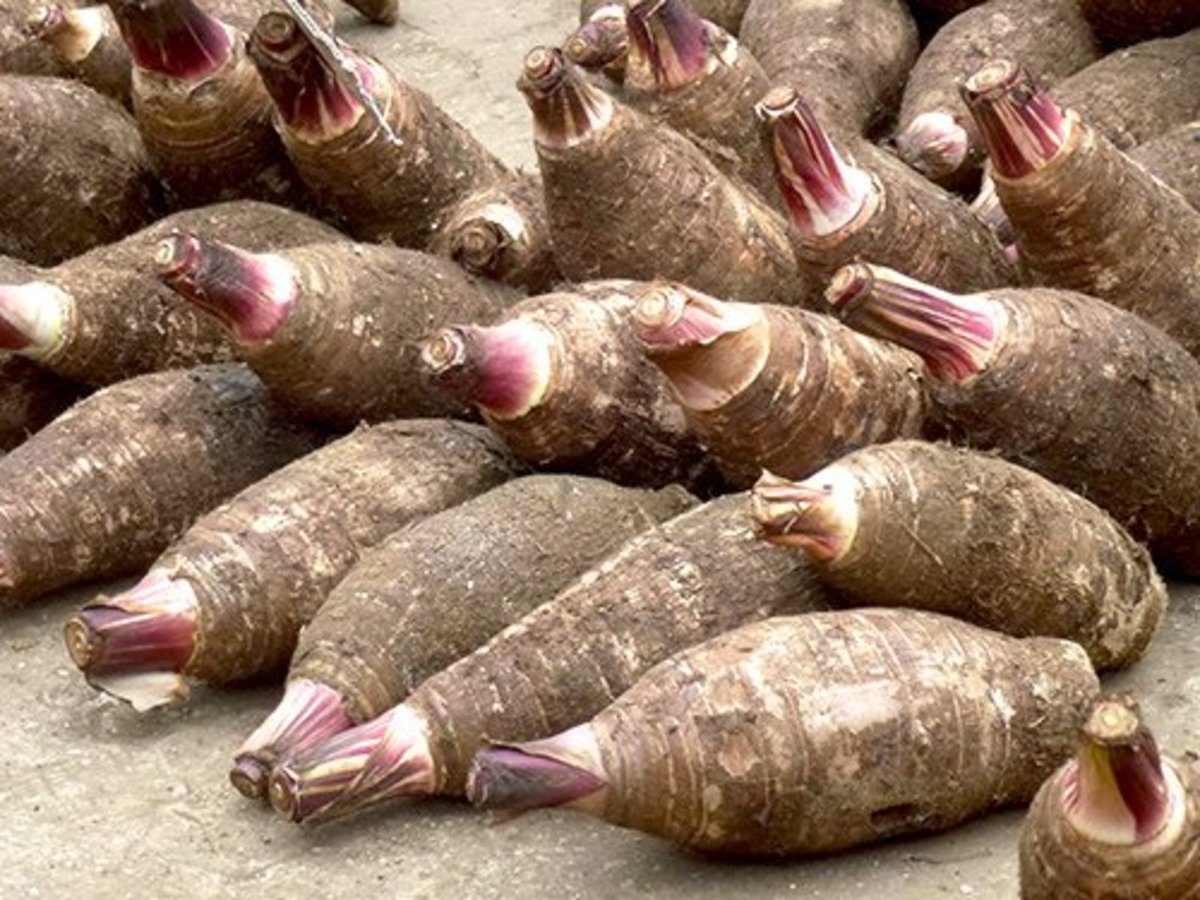
7 Surprising Benefits Of Taro Root4 min read


It has a brown outer skin and white flesh with purple specks throughout. When cooked, it has a mildly sweet taste and a texture similar to potato.
Taro root is a great source of fiber and other nutrients and offers a variety of potential health benefits, including improved blood sugar management, gut and heart health.
Here are 7 health benefits of taro root.
1. Rich in Fiber and Other Important Nutrients
One cup (132 grams) of cooked taro has 187 calories — mostly from carbs — and fewer than one gram each of protein and fat (1).
It also contains the following:
- Fiber: 6.7 grams
- Manganese: 30% of the daily value (DV)
- Vitamin B6: 22% of the DV
- Vitamin E: 19% of the DV
- Potassium: 18% of the DV
- Copper: 13% of the DV
- Vitamin C: 11% of the DV
- Phosphorus: 10% of the DV
- Magnesium: 10% of the DV
Thus, taro root has good amounts of various nutrients that people often don’t get enough of, such as fiber, potassium, magnesium and vitamins C and E .
SUMMARY Taro root is a good source of fiber and many vitamins and minerals that the standard American diet frequently lacks.
Although taro root is a starchy vegetable, it contains two types of carbohydrates that are beneficial for blood sugar management: fiber and resistant starch.
Fiber is a carbohydrate that humans can’t digest. Since it’s not absorbed, it has no impact on blood sugar levels.
It also helps slow down the digestion and absorption of other carbs, preventing large blood sugar spikes after meals .

Studies have found that high-fiber diets — containing up to 42 grams per day — can reduce blood sugar levels by roughly 10 mg/dl in people with type 2 diabetes.
Taro also contains a special type of starch, known as resistant starch, that humans cannot digest and thus does not raise blood sugar levels. Roughly 12% of the starch in cooked taro root is resistant starch, making it one of the better sources of this nutrient .
This combination of resistant starch and fiber makes taro root a good carb option — especially for people with diabetes.
SUMMARY Taro root contains fiber and resistant starch, which both slow digestion and reduce blood sugar spikes after meals.
The fiber and resistant starch in taro root may also help reduce your risk of heart disease.
Substantial research has found that people who eat more fiber tend to have lower rates of heart disease .
One study found that for every additional 10 grams of fiber consumed per day, the risk of dying from heart disease decreased by 17%.
This is believed to be due in part to fiber’s cholesterol-lowering effects, but research is ongoing.
Taro root contains more than 6 grams of fiber per cup (132 grams) — more than twice the amount found in a comparable 138-gram serving of potatoes — making it an excellent source of fiber .
Taro root also provides resistant starch, which lowers cholesterol and has been linked to a reduced risk of heart disease .
SUMMARY Taro root is high in fiber and resistant starch, which help lower cholesterol and reduce your risk of heart disease.
Taro root contains plant-based compounds called polyphenols that have various health benefits, including the potential to reduce cancer risk.
The main polyphenol found in taro root is quercetin, which also exists in large amounts in onions, apples and tea.
Test-tube and animal studies have found that quercetin can trigger cancer cell death and slow the growth of several types of cancers .
It’s also a powerful antioxidant that protects your body from excessive free radical damage that has been linked to cancer .
One test-tube study found that taro extract was able to stop the spread of some types of breast and prostate cancer cells, but no human research has been conducted.
While early studies are promising, more research is needed to better understand the anticancer properties of taro.
SUMMARY Taro root contains polyphenols and antioxidants that may combat cancer growth and protect your body from oxidative stress. Yet, more research in this area is needed.
5. May Help You Lose Weight

Taro root is a good source of fiber, containing 6.7 grams per cup (132 grams).
Research has found that people who eat more fiber tend to have lower body weight and less body fat.
This may be because fiber slows stomach emptying, which keeps you fuller longer and reduces the number of calories you eat throughout the day. Over time, this may lead to weight loss.
The resistant starch in taro root may have similar effects.
One study found that men who took a supplement containing 24 grams of resistant starch before meals consumed roughly 6% fewer calories and had lower insulin levels after the meal, compared to the control group.
Animal studies have also shown that rats fed diets high in resistant starch had less total body fat and belly fat. It’s hypothesized that this is partially due to resistant starch increasing fat-burning in your body, but further research is needed.
SUMMARY Due to its high fiber and resistant starch content, taro root may increase feelings of fullness, reduce overall calorie intake and


















